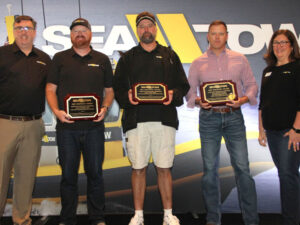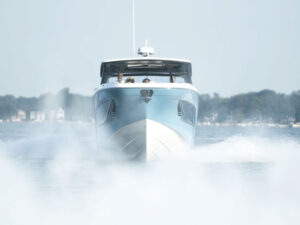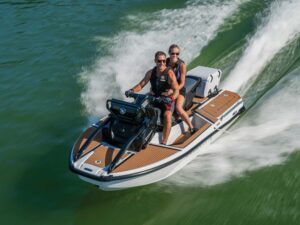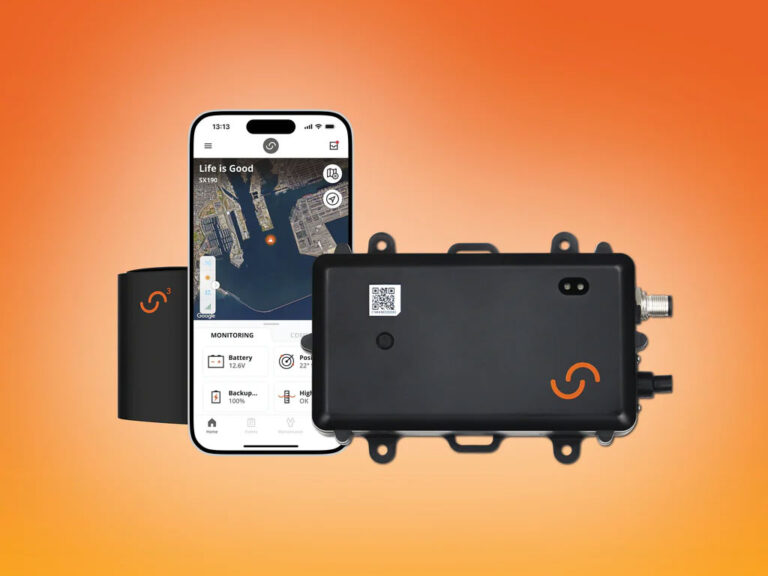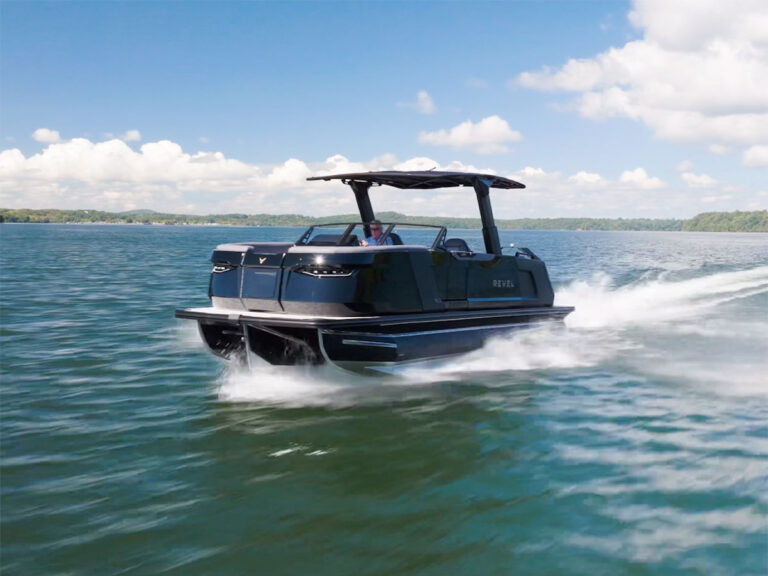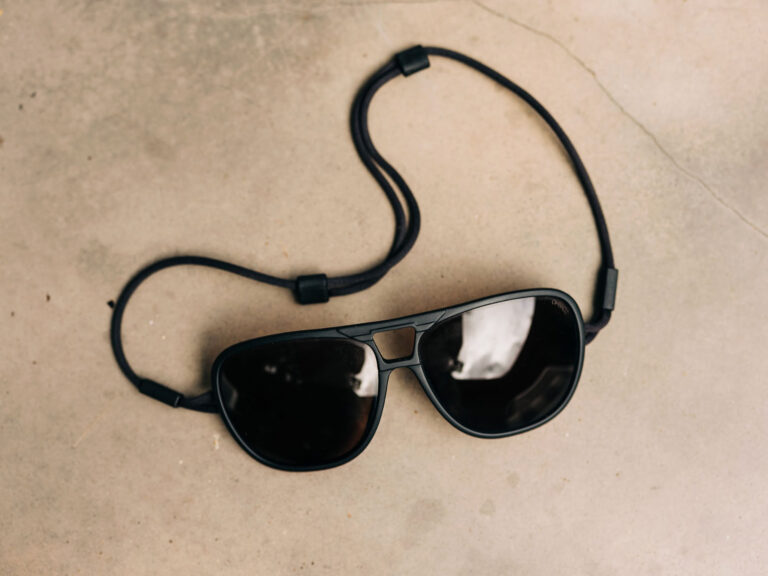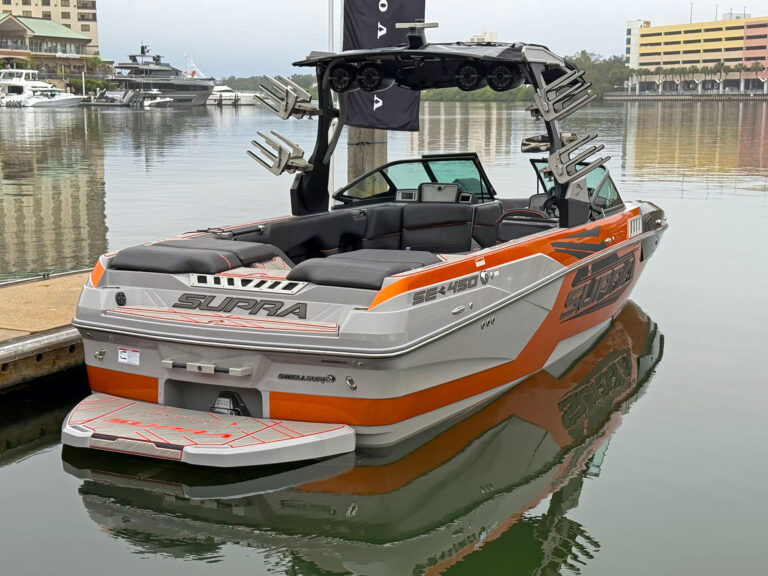
The 5500 requires a 31⁄16-inch-diameter mounting hole and 3 inches of depth at the dash. Carefully measure and take into account the increased diameter of the dial flange. Cut the hole with a hole saw (check behind the panel first for wires and hoses), and then feed the wire harness through the hole as you slide the monitor in place. A rubber gasket behind the face seals out moisture once you tighten the mounting bracket with nylon thumb screws from behind.

Using the supplied bracket, install the sending unit in a dry location at a low point in the line, so that fuel travels up when exiting. It should be downstream from the fuel filter/water separator, but before any primer bulbs or fuel pumps. Make sure the sensor is oriented correctly (there is a top and bottom plus in and out sides). Install bronze hose barbs using a fuel-resistant sealant such as Hercules Grrip. Do not use Teflon tape. Double-clamp the fuel lines.

Run a triplex AWG 16 cable to connect three wires from the sensor to the gauge. The red wires need to be connected to a common, fused 12-volt positive source from the ignition switch — the black wires to a common ground. (The blue and brown wires are not used.) The 5500 can be backlit by connecting the light’s positive white wire to an illumination circuit and its black wire to ground. FloScan supplies all the crimp connectors and heat-shrink tubing.

The 5500 has a small LED readout at the bottom of the gauge that tells you how much fuel you have used. Subtract that number from the fuel capacity and you’ll know how much gas you have left. To be able to easily reset this after each fill-up, run the green wire from the gauge directly to the battery with a fuse and an on/momentary-off switch. Turn the switch off for a few seconds to break the circuit and zero-out the totalizer when needed.

After you fill up the tank a few times, note the amount of fuel required to fill the tank versus the totalizer reading. Next, calculate the average percentage difference (either over or under) between gauge and actual amount required for fill-up. Then use a small screwdriver to manipulate the nine tiny slide keys on the back of the monitor and the instructions in the user’s manual to electronically calibrate the monitor.

If you have an Evinrude E-TEC, Mercury Verado or Suzuki four-stroke outboard, the 5500’s gallons-per-hour reading may fluctuate at times, particularly at low rpm, due to fuel pumps cycling on and off while filling the engine vapor separation module. Though the gph numbers might not be usable during this time, they will not affect the accuracy of data provided in the 5500’s totalizer display, according to FloScan
Many newer marine engines let you monitor fuel consumption electronically so you can optimize fuel efficiency. Yet many older motors don’t offer this. If you have an old-school motor, don’t despair. You can add fuel monitors with electromechanical flow sensors on most boats, thanks to aftermarket systems from companies such as Faria, FloScan, Garmin and Lowrance.
This project focuses on installing one of the most trusted units on the market — a FloScan Series 5500 CruiseMaster monitor. Models are available to read flow rates up to 100 gph. All have totalizers. This is a relatively simple install on a single-engine, gasoline-powered boat, but more-complex systems for multiple engines and/or diesels are also available.
Getting Started
Skill Level: 3/5
Time to Complete: 4 hours
Tools and Supplies
*FloScan Series 5500 CruiseMaster system ($299.99, defender.com)
*AWG 16 triplex wires ($1.01/foot, westmarine.com)
*31⁄16-inch hole saw
*Drill motor and bits
*Phillips screwdriver set
*Electrician’s snake (for pulling the triplex wire)
*Diagonal cutters
*Crimping tool
*Heat gun
*Assorted stainless steel fasteners, wire supports and zip-ties
Quick Tip: To select the 5500 gauge with best maximum reading for your engine, use 10 percent of the horsepower. If you have 175 hp, for instance, you’ll burn about 17.5 gph at wide-open throttle, so get the 20 gph model.
Use this method for manually calculating fuel consumption.

